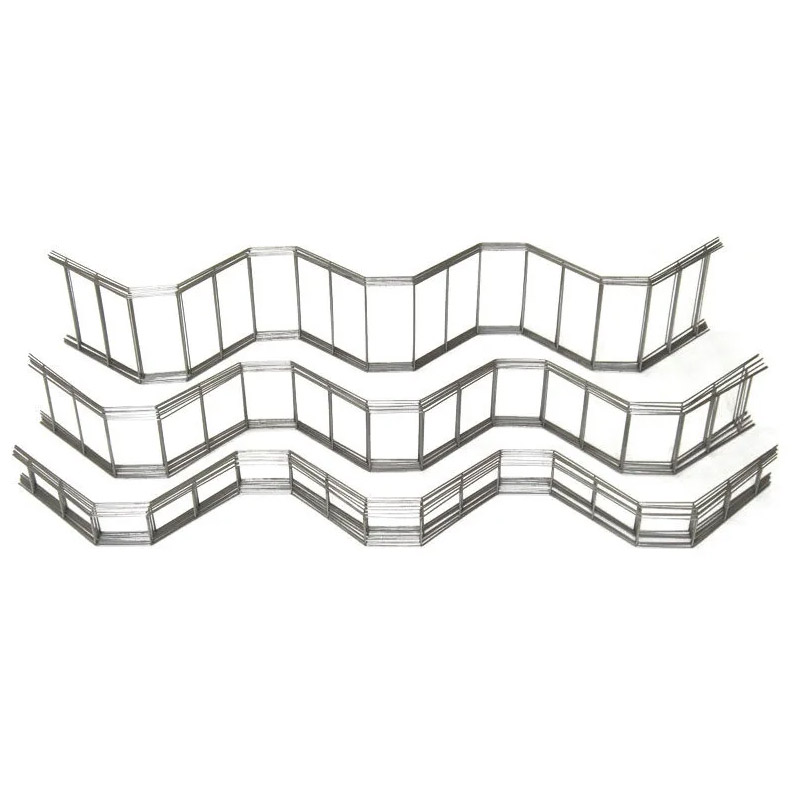
- Mobile Phone
- +8613931874955
- sales@cntcmetal.com
Brick Reinforcement Connection for Ladder Stability and Durability Enhancements
The Evolution and Importance of Brick Reinforcement Ladders in Construction
In the ever-evolving landscape of construction and architecture, one of the key components that enhances both structural integrity and design aesthetics is the concept of brick reinforcement. Among the various methods employed, the use of brick reinforcement ladders has gained significant attention. This innovative technique not only bolsters the strength of brick components but also contributes to the longevity and durability of structures.
What are Brick Reinforcement Ladders?
Brick reinforcement ladders are structural reinforcements made of steel or fiberglass designed to be embedded in mortar or between brick layers during the construction process. These ladders consist of horizontal bars spaced at specific intervals connected by vertical wires, creating a sturdy mesh-like structure. The primary function of these reinforcements is to provide lateral support and prevent cracking, especially in areas subjected to stress or dynamic loads.
The Need for Reinforcement
Historically, bricks have been lauded for their aesthetic appeal and thermal properties. However, as building designs have progressed towards greater heights and more intricate forms, the limitations of unreinforced bricks have become apparent. Factors such as seismic activity, high winds, and even thermal expansion can compromise the integrity of masonry structures. This is where the reinforcement ladder comes into play, offering an effective solution to mitigate these challenges.
Installation Process
The installation of brick reinforcement ladders is straightforward and can be seamlessly integrated into the construction process. Typically, they are placed at specified intervals, depending on the design requirements and the anticipated loads. During the laying of bricks, the reinforcement ladders are strategically positioned within the mortar layers. This placement ensures that they are bonded securely within the wall, providing strength where it is needed most.
Moreover, the use of reinforcement ladders can enhance the speed of construction. With a reliable and robust framework in place, the overall building process can be accelerated without sacrificing safety or quality. This prudent integration of technology in conventional brickwork is a testament to the advancing techniques in modern construction.
brick reinforcement ladder

Advantages of Brick Reinforcement Ladders
1. Enhanced Structural Integrity The most significant benefit of using brick reinforcement ladders is the improvement of structural integrity. By providing lateral support, these ladders help to distribute loads evenly, minimizing the risk of cracks and collapses.
2. Increased Lifespan Structures with reinforced brickwork tend to have a longer lifespan. The enhanced durability offered by these reinforcements means fewer repairs and maintenance over time, translating to cost savings in the long run.
3. Design Flexibility Architects and designers can take advantage of the additional strength provided by brick reinforcement ladders to explore more ambitious designs. This flexibility allows for innovative aesthetics without compromising safety.
4. Seismic Resistance In earthquake-prone areas, the use of brick reinforcement ladders becomes crucial. They provide the necessary support and resilience against seismic forces, thus ensuring the safety of occupants.
5. Thermal Efficiency Reinforced brick structures can also contribute to improved thermal performance. The robust design helps to maintain stable internal temperatures, enhancing energy efficiency.
Conclusion
The implementation of brick reinforcement ladders marks a significant advancement in construction technology. As the industry continues to embrace innovative solutions to meet modern demands, these reinforcements will play an increasingly vital role in the design and construction of buildings. By enhancing structural integrity, supporting ambitious architectural designs, and ensuring longevity, brick reinforcement ladders offer a practical and effective solution tailored to contemporary construction needs.
As we look to the future of architecture, the marriage of traditional materials like brick with modern reinforcement techniques heralds a new era of resilience and creativity. Ultimately, the evolution of brick reinforcement ladders exemplifies how construction practices can adapt to the challenges of an ever-changing environment, ensuring safety and durability for generations to come.
share:
-
Wall Ties for Concrete: Invisible Guardians of Building Structural StabilityNewsAug.08,2025
-
Timber Frame Wall Ties: Stable Bonds for Load TransmissionNewsAug.08,2025
-
Stainless Steel Woven Wire Mesh: A versatile material from boundary protection to functional supportNewsAug.08,2025
-
Powder Coat Coil Springs: Creating peace of mind and reliability with sturdy protectionNewsAug.08,2025
-
Floor Standing Sign Holder: A Powerful Assistant for Flexible DisplayNewsAug.08,2025
-
Binding Iron Wire: An Invisible Bond for Building StabilityNewsAug.08,2025
-
Yard Sign Stakes: Reliable Guardians of Outdoor SignsNewsAug.04,2025



















